The Ultimate Guide to Social Media for Law Firms
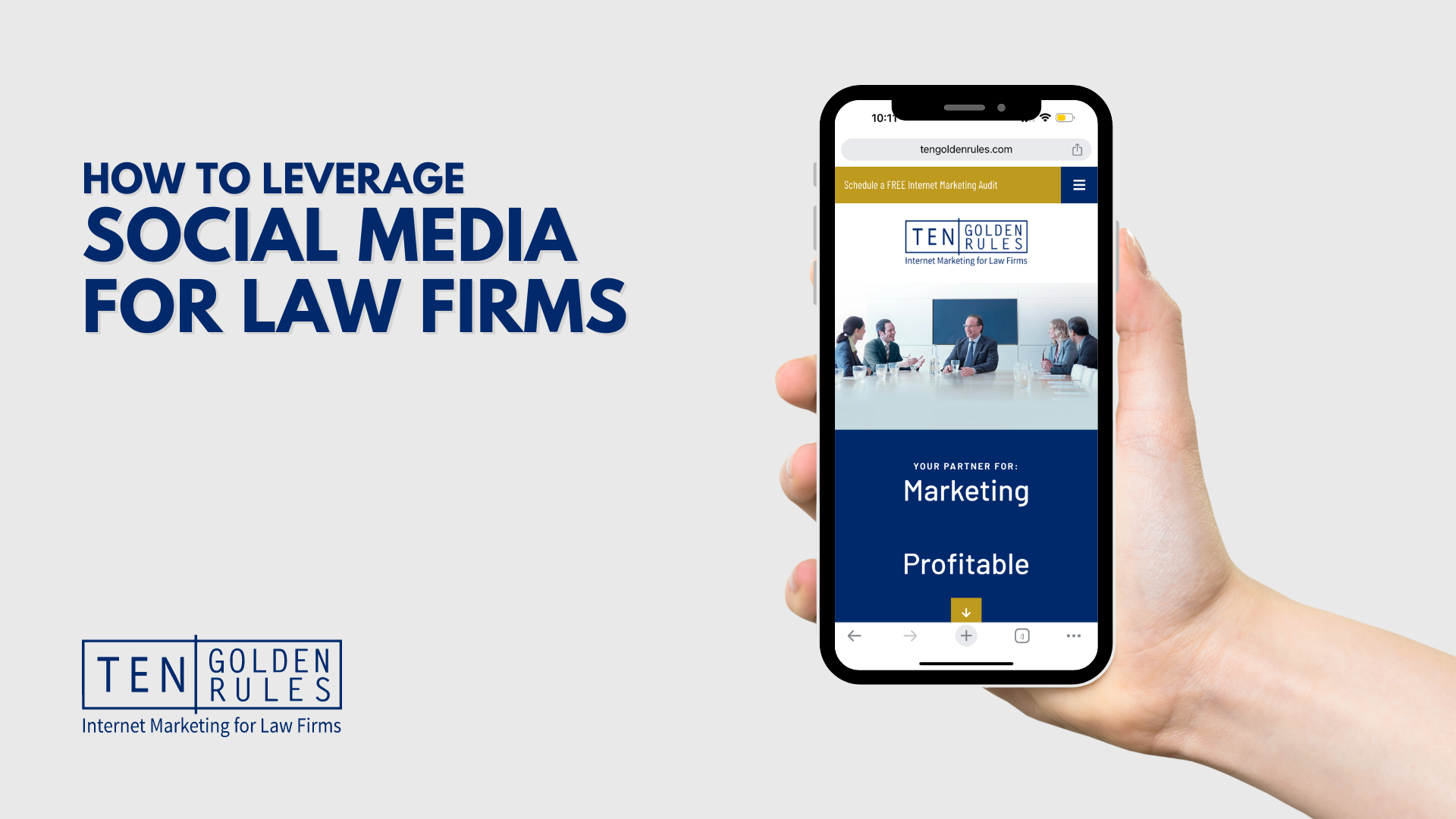
While some young attorneys have developed a social media style that goes viral on Instagram or TikTok, for most law firms, social media can perform two important functions. 1. A quality check and 2. A way to stay top-of-mind for past clients and referring attorneys.
Many potential clients – when they first discover your firm do a “quality check.” They’ll go onto Google Reviews or their social media platform of choice (typically Facebook or Instagram) and search your firm to make sure it’s credible. Referring attorneys might look you up on LinkedIn. Do you have an up-to-date presence? They’ll want to see consistent posts establishing your firm as experts in your practice area and are you active and engaged in the community.
This is the first step that many people will take, before contacting you. In a way, your social media presence is the first impression many of your clients will get of your firm, and a potential lead-blocker. So, if you don’t have at least a baseline social media strategy, you are likely missing out on some great clients.
How can social media boost your referrals?
The most common way law firms gain business is through referrals. You may not think so, but your digital presence can strongly impact the amount of referrals you’re receiving from past and current clients, which can increase your client database exponentially!

The best way to stay top-of-mind with past clients to gain new referrals is to send out a monthly newsletter. This newsletter can include information about engagement in the community, information about your team, case studies, and updates within your firm.
Seeing your name pop up each month in their inbox will keep you top-of-mind, so the next time someone they know needs a lawyer, you will be the first person they recommend. Regardless of whether they find value in the content of the newsletter, the simple act of seeing it in their inbox will serve its purpose.
The same goes for social media. Posting consistently will keep your firm top-of-mind, and will reinforce your engagement and activity in your client’s mind.
This is the value in a consistent digital presence.
What social media platforms should you be on?
In our opinion, the big four platforms to engage with are Facebook, Instagram, Twitter and LinkedIn.
Each platform serves a different purpose, so your content on each should be tailored to its unique audience. For instance, LinkedIn is great for longer-form content geared towards professionals, while Facebook would be better suited to host short-form content with less-specific language to appeal to a wider audience base.
There are also two platforms that are specifically suited to host video content – YouTube and TikTok. These platforms are similar to the big four, in that consistency and topic relevance are key to performing well in the algorithm, but different in the type of content being served.
Six platforms may seem overwhelming, but stay with me. Next, we’ll discuss Cascading Content, which allows you to re-use the same content on each platform rather than creating an entirely unique post for each individual account.
Plus, you don’t have to be on every one of these platforms if you don’t want to! If you’re choosing just a few, our recommendations would be YouTube, Facebook, and LinkedIn.
What is Cascading Content?
If you’re running a law firm, you’re already busy enough. You don’t need to expend valuable time and energy to come up with content for your social media platforms multiple times per week.
Our strategy of using cascading content allows you to create an entire month of content in just one hour.
Here’s how it works for our agency – keep in mind, you can do this yourself as well!
We set up a one-hour videography session with our client and prepare them with ten questions to answer during that time. To start, we’ll typically use the questions they most frequently receive from their clients – for instance, what do I do if I’m hit by an Uber?
During that hour, the client will state and answer each of these questions in a quick, one or two minute clip (with some coaching, if needed). Gathering content in a video format like this is especially valuable for those clients who prefer to know the person they’re working with. When they watch these videos online, it gives them a sense of reassurance to know who their lawyer is and hear his or her expertise in action.
The content generated in this one-hour session will populate each of our client’s social media platforms, their blog, and their YouTube channel for an entire month (or more).
Here’s a visual of how we would take one piece of video content and repurpose it into a YouTube video, a blog, social media posts, and an email:
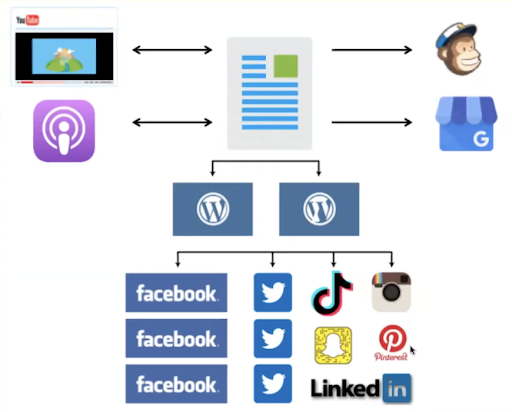
What do you do with the content once it’s created?
Once you create this content, you do have to put steps in place to actualize it onto your online platforms. The best way to do this is to create a monthly calendar outlining the content to be posted, emailed, etc. and holding someone accountable to execute on that calendar.
Here’s an example of what our content calendar looks like:
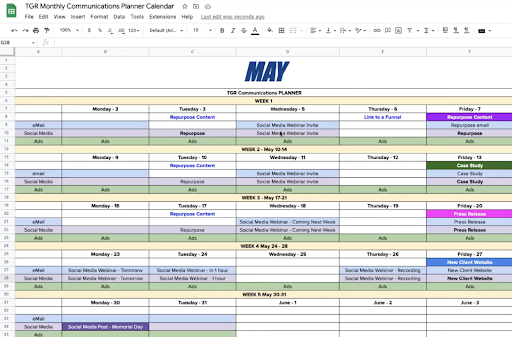
Examples of the same piece of content being used on different platforms:
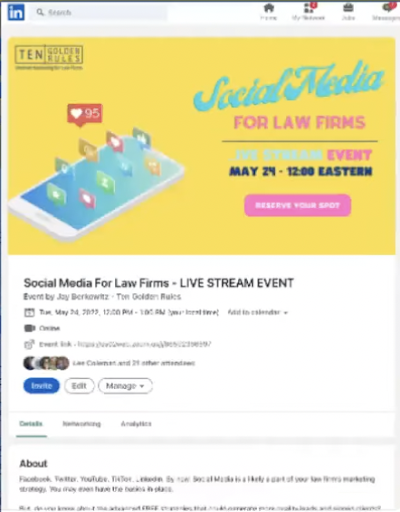
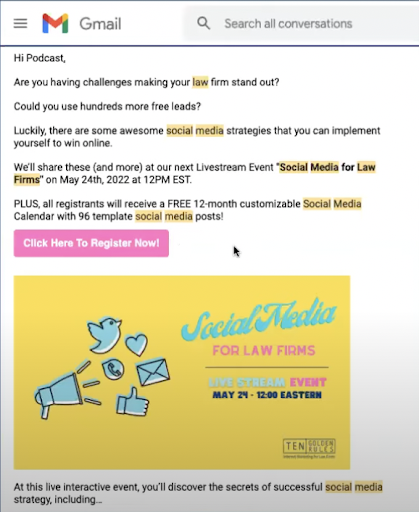


As you can see, we calendar one piece of content to go out on all of our social platforms and via email newsletter on the same day. This creates consistency across-platforms, and allows us to stay on top of posting our content on each.
So, you have your baseline social media strategy in place. How do you expand on it?
Once you’re confident with your social media strategy and the cascading content that you have in place, you can begin experimenting with more advanced strategies.
Here are a few of our favorite:
1. Your social media presence will help you build a know, like, and trust relationship.
The more you post to build awareness of your firm, including fun videos like “3 Lawyers Eating Sandwiches” or @lawbymike on TikTok, that give the audience an understanding of your brand’s personality, the more top-of-mind you will be when a moment of intent comes along for one of your followers.
One way to generate this content is to set up a videography session as we mentioned above, but ask the attorney on video to come prepared with a few relatable anecdotes or funny stories relating to their practice. Simply record these stories being told in a vertical format, edit them down to a 2-or-3-minute clip, and post to TikTok, YouTube Shorts, and Instagram Reels.
You can also tap into local resources like location-based Facebook Groups to engage with the community and provide helpful advice or resources when useful.
2. Of course, one of the most widely-untapped resources in social media is utilizing your Google My Business profile like a social media platform to increase your brand’s visibility on Google Search Results. Click here to read our article on setting up and correctly using Google My Business.
3. Use what we call the “Concierge Service” method to make clients feel welcomed when they approach your firm. Make sure you’re answering the phone quickly and warmly, walking them through the experience they can expect with your firm, introducing them to the attorney they’ll be working with, and ensuring they feel comfortable and taken care of the entire time.
The most common complaint we hear from clients of law firms is frustration about not being able to reach their lawyer. This concierge method alleviates that pain and ensures a positive experience throughout!
4. TikTok is quickly becoming one of the most popular social platforms, and use of it by law firms and similar professional businesses is still relatively new.
Even less utilized is TikTok advertising, which is a paid resource that can skyrocket your firm to notability among TikTok users, especially if the content being pushed is engaging.
This ad platform is still in its infancy, so the time to get involved is NOW. The cost-per-ad is low, there isn’t much competition in your field, the traffic is phenomenal, and TikTok has developed the ability to target.
5. Perhaps the most advanced strategy you can use to increase your digital presence is to create a viral video. While this strategy is not surefire, as there’s no guaranteed way to ensure your video will see massive success, it has the potential to bring more visibility to your firm than any of the other methods we’ve mentioned.
The best way to create a viral video is to try. For law firms, telling funny or relatable stories about past cases or experiences, capitalizing on a fun trend to relate it to your otherwise-stuffy industry, and getting your office staff involved in a video, will get the best results.
Ultimately, the best piece of advice that I can give a law firm looking to get started on social media is to just jump in. Answer your clients questions, on blogs or videos, and then ‘cascade’ the content onto the other platforms – it’s easy! Once you’re comfortable and you have a solid strategy, then you can start incorporating the more advanced strategies, and really having fun.

